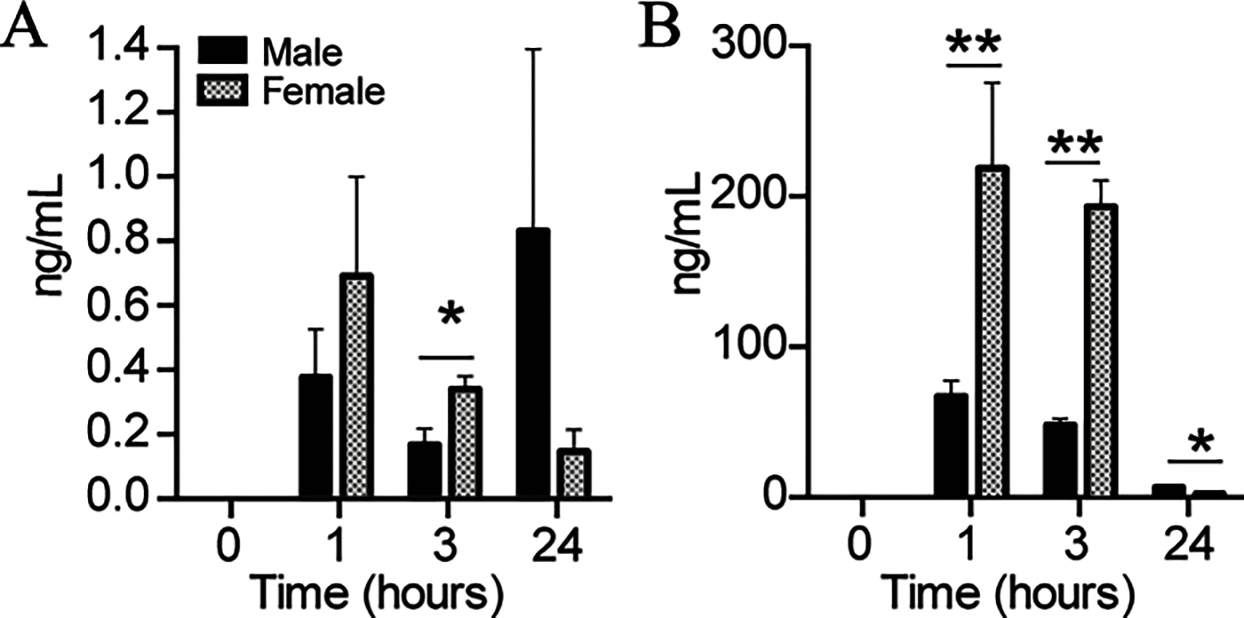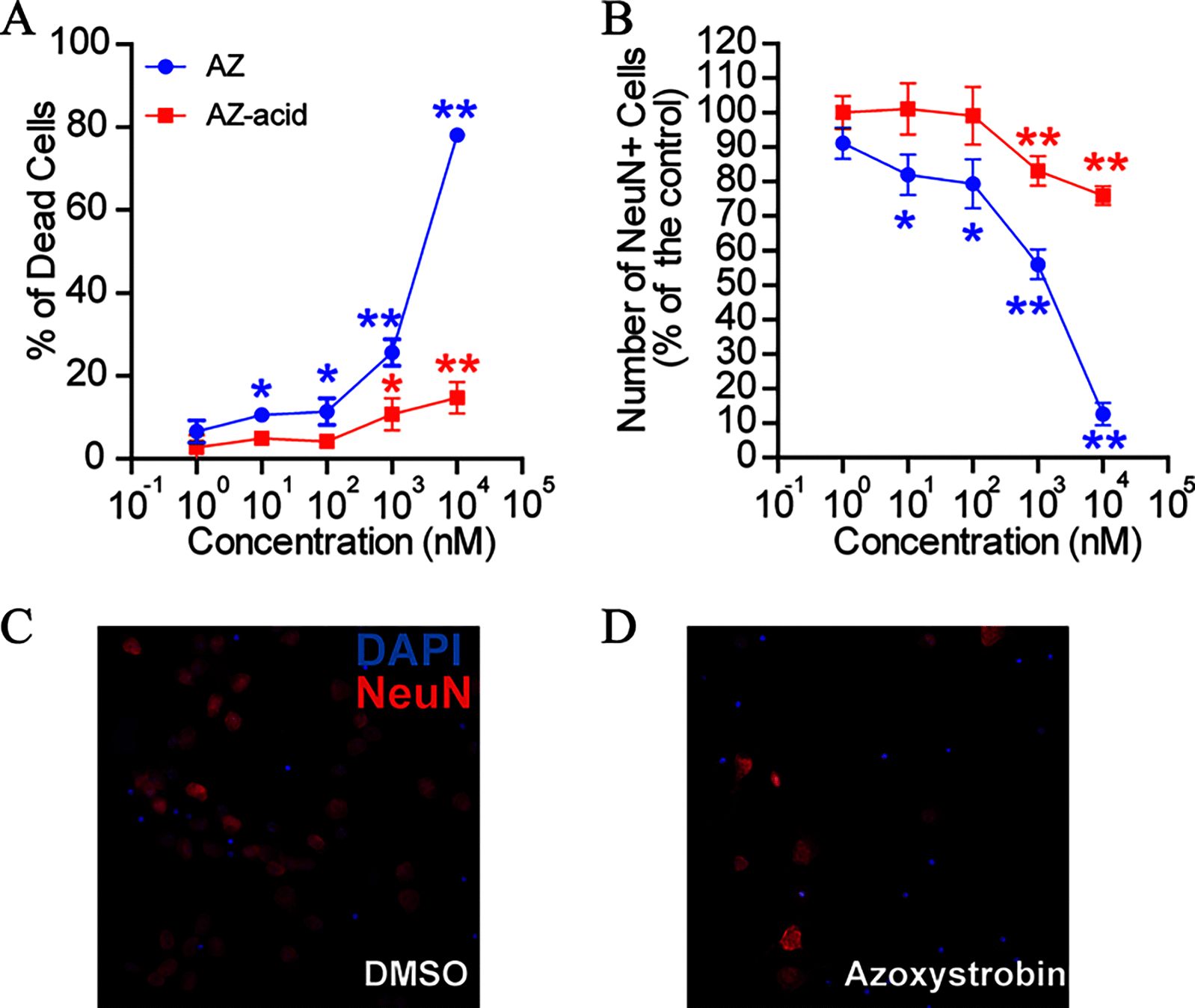Detection of Azoxystrobin Fungicide and Metabolite Azoxystrobin-Acid in Pregnant Women and Children, Estimation of Daily Intake, and Evaluation of Placental and Lactational Transfer in Mice
- PMID: 35200037
- PMCID: PMC8869102
- DOI: 10.1289/EHP9808
Detection of Azoxystrobin Fungicide and Metabolite Azoxystrobin-Acid in Pregnant Women and Children, Estimation of Daily Intake, and Evaluation of Placental and Lactational Transfer in Mice
Abstract
Background: Azoxystrobin (AZ) is a broad-spectrum strobilurin fungicide that is used in agriculture and was recently added to mold- and mildew-resistant wallboards. AZ was found to have toxic effects in animals at embryonic stages and was listed as a frontline target for biomonitoring in children.
Objectives: This study investigated exposure to AZ in pregnant women and young children, whether AZ could be transferred from an exposed mother to offspring, and whether AZ or one of its primary metabolites, AZ-acid, was neurotoxic in vitro.
Methods: We quantified AZ-acid, a sensitive indicator of AZ exposure, in urine samples collected from 8 pregnant women (12 urine samples) and 67 children (40-84 months old; 96 urine samples) with high-resolution mass spectrometry. Gestational and lactational transfer was assessed in C57Bl/6 mice. Neurotoxicity of AZ and AZ-acid was investigated in vitro with mouse cortical neuron cultures.
Results: AZ-acid was present above the limit of quantification () in 100% of the urine samples from pregnant women and in 70% of the urine samples from children, with median concentration of 0.10 and , and maximal concentration of 2.70 and , respectively. Studies in mice revealed that AZ transferred from the mother to offspring during gestation by crossing the placenta and entered the developing brain. AZ was also transferred to offspring via lactation. High levels of cytotoxicity were observed in embryonic mouse cortical neurons at concentrations that modeled environmentally relevant exposures.
Discussion: Our study suggested that pregnant women and children were exposed to AZ, and at least 10% of the children (2 out of 20 that were evaluated at two ages) showed evidence of chronic exposure. Future studies are warranted to evaluate whether chronic AZ exposure affects human health and development. https://doi.org/10.1289/EHP9808.
Figures






References
-
- Battaglin WA, Sandstrom MW, Kuivila KM, Kolpin DW, Meyer MT. 2011. Occurrence of azoxystrobin, propiconazole, and selected other fungicides in us streams, 2005–2006. Water Air Soil Pollut 218(1–4):307–322, 10.1007/s11270-010-0643-2. - DOI
Publication types
MeSH terms
Substances
Grants and funding
LinkOut - more resources
Full Text Sources

